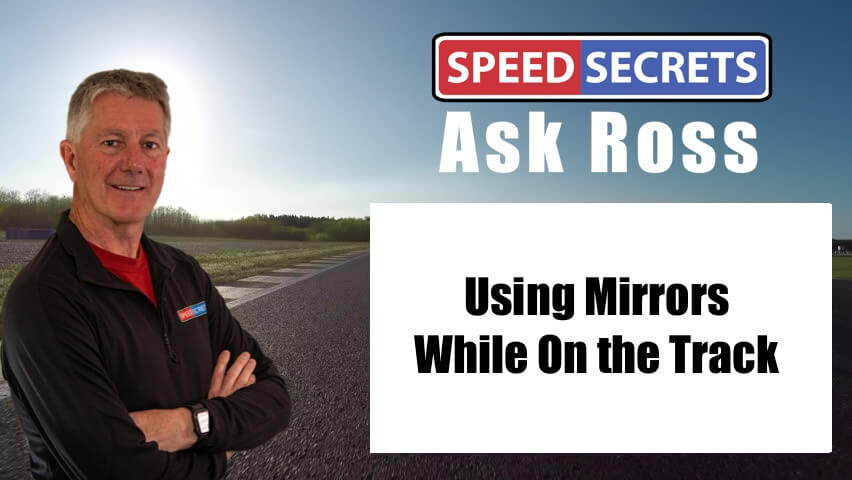 Q: “How can I practice using my mirrors more wisely during driving on public roads, while not losing focus from the road and while using peripheral vision?”
Q: “How can I practice using my mirrors more wisely during driving on public roads, while not losing focus from the road and while using peripheral vision?”
A: I’m glad you’re thinking about using your street/road driving as a way to practice for track driving. To me, that’s the only reason for driving on the road: to practice our track driving skills! J Of course, I’m talking about doing this at appropriate and legal speeds…
Okay, let me give you seven things to do that I think will help:
- Adjust your mirrors properly: Sit in your driver’s seat and adjust your side mirrors so that you cannot see the side of your own car without leaning your head toward the mirror. This will help eliminate blind spots and allow you to see cars next to you more easily.
- Practice glancing at your mirrors: While driving on the road, make a conscious effort to glance at your mirrors frequently. Try to do this each time you come out of a corner, onto a straightaway or just before you begin braking. This will help you become more aware of your surroundings and other cars around you, and get you into the habit of doing the same checks on the track.
- Use your peripheral vision: When glancing at your mirrors, try to use your peripheral vision to notice other cars without turning your head excessively. This will allow you to maintain focus on the road ahead while still being aware of your surroundings.
- Develop a scanning routine: Create a routine for scanning your mirrors and the road ahead. For example, glance at your rearview mirror, then your left side mirror, then the road ahead, then your right-side mirror, and back to the road ahead. This will help you maintain awareness of your surroundings without losing focus on the road.
- Practice on familiar routes: Start practicing these techniques on familiar routes, such as your daily commute. As you become more comfortable with using your mirrors and peripheral vision, you can begin to incorporate these skills into your driving on less familiar roads.
- Gradually increase the difficulty: As you become more comfortable with using your mirrors and peripheral vision, try practicing in more challenging driving situations, such as heavy traffic or on highways. This will help you further develop your skills and become a safer driver.
- Make it a habit/mental program: Continue practicing these techniques until they become second nature. Over time, using your mirrors wisely and maintaining awareness of your surroundings will become an automatic part of your driving routine.
An overall goal should be to always know when and where there is another car around you, and to never be surprised by one.

